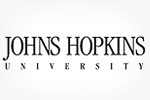Achievement
Relationship between spatial language and reorientation

Project
IGERT: Unifying the Science of Language
University
Johns Hopkins University
(Baltimore, MD)
PI
Research Achievements
Relationship between spatial language and reorientation
Reorientation in many species has been shown to depend on a geometric representation of the surrounding space, which may then be combined with surface features. The mechanisms underlying the use of geometry and features have been debated, with some suggesting that for humans, language is the crucial vehicle. Insight may be gained by examining the role of language in reorientation among people with Williams syndrome (WS); a genetic disorder that results in a cognitive profile of severe spatial impairment yet strikingly fluent language. IGERT trainee Katrina Ferrara tested 16 individuals with WS in the reorientation paradigm, and found that geometric sensitivity is in fact present in many individuals. In examination of the relationship between spatial language and reorientation, it was found that neither comprehension nor production of spatial terms (left/right) predicted accurate search patterns. Thus, successful landmark use is not dependent on language in people with WS.
- “Research Achievements”
- Achievements for this Project





